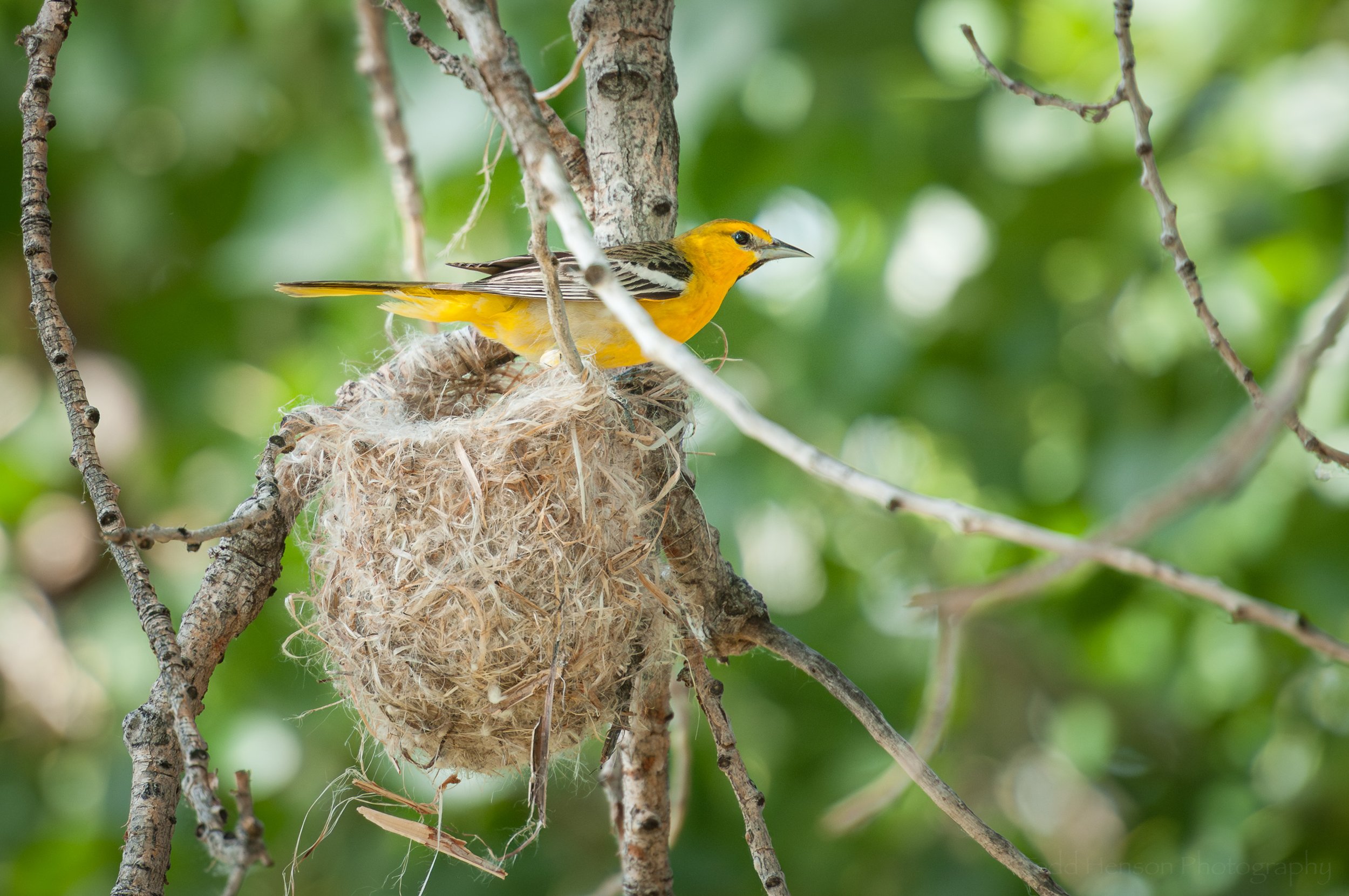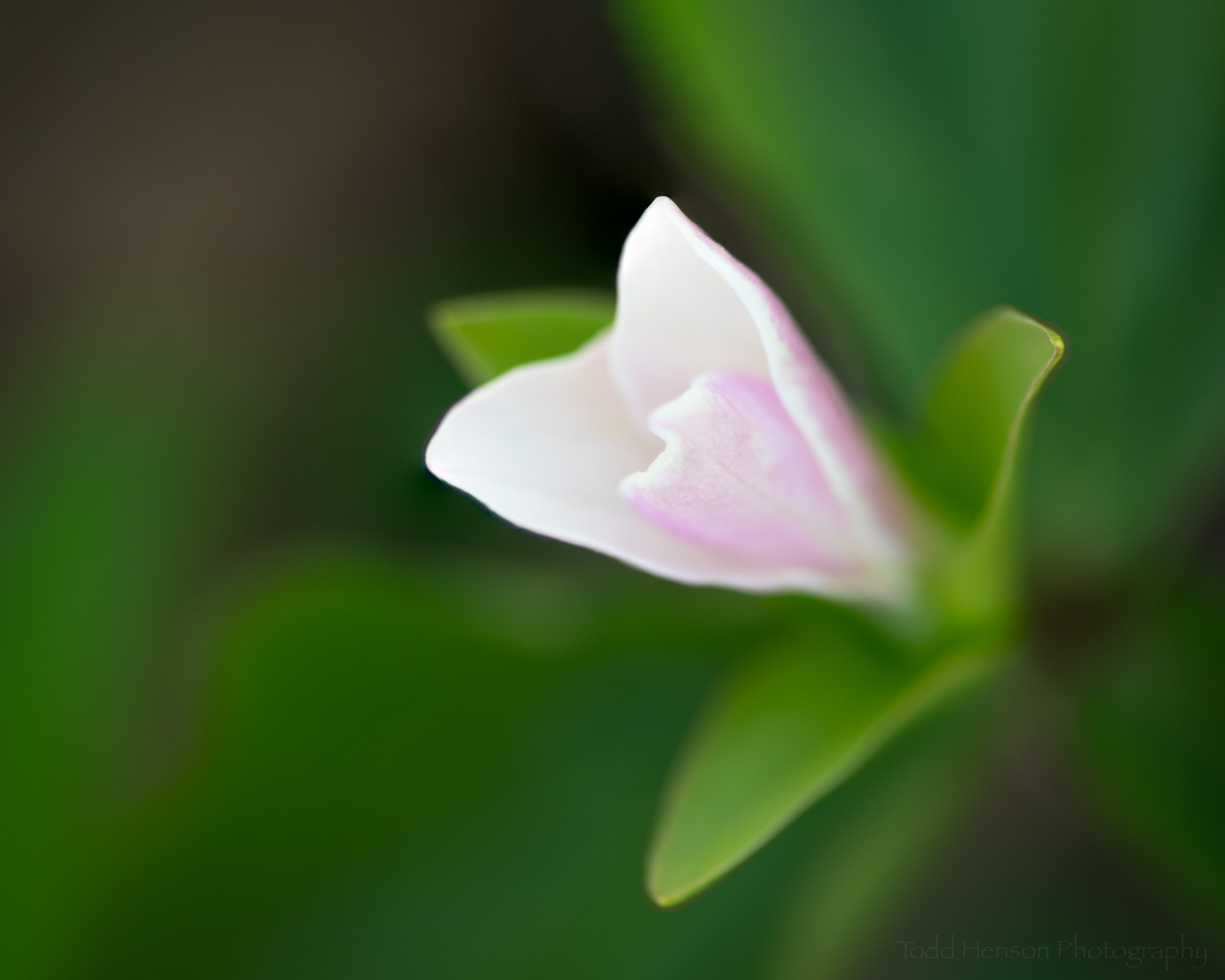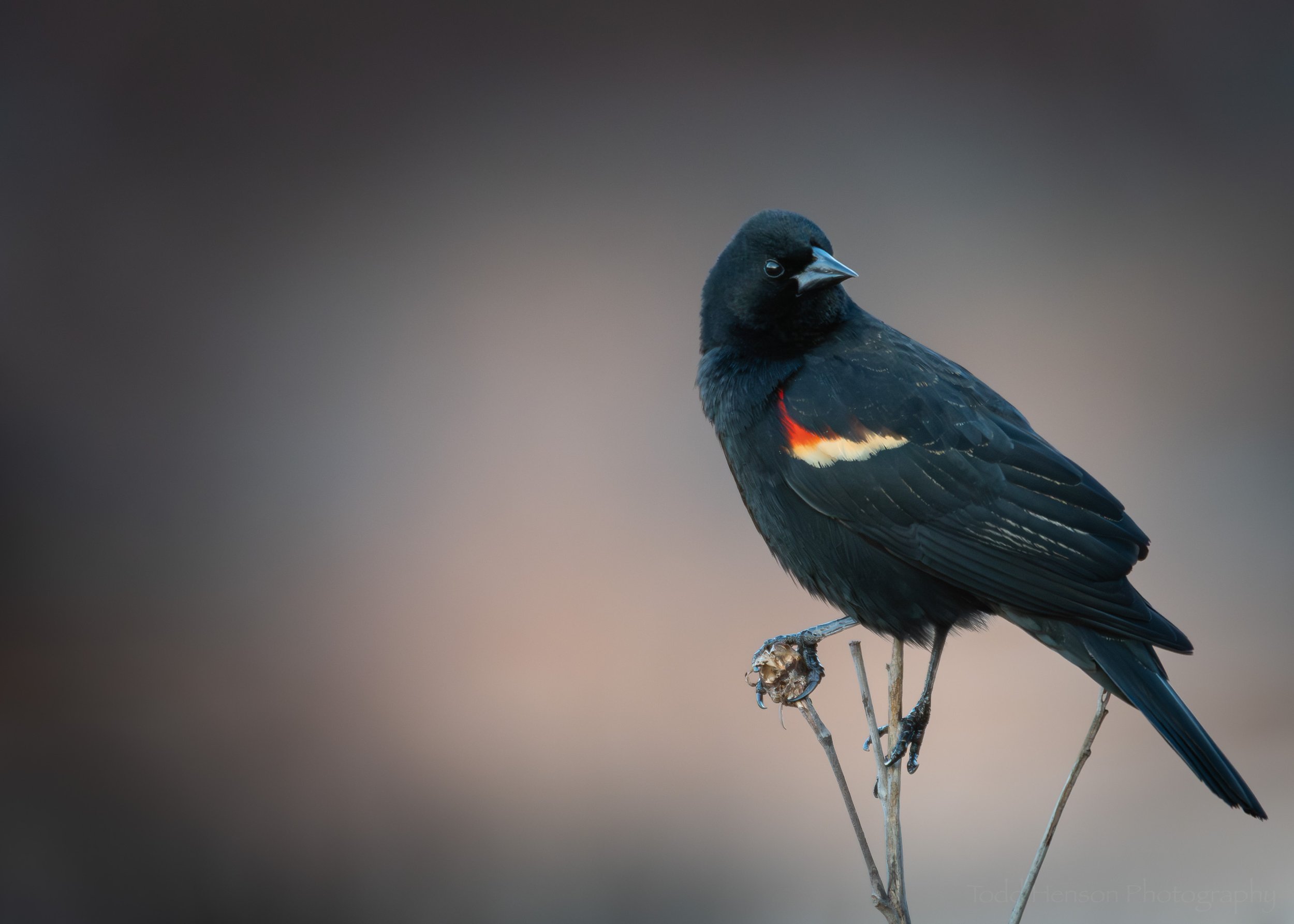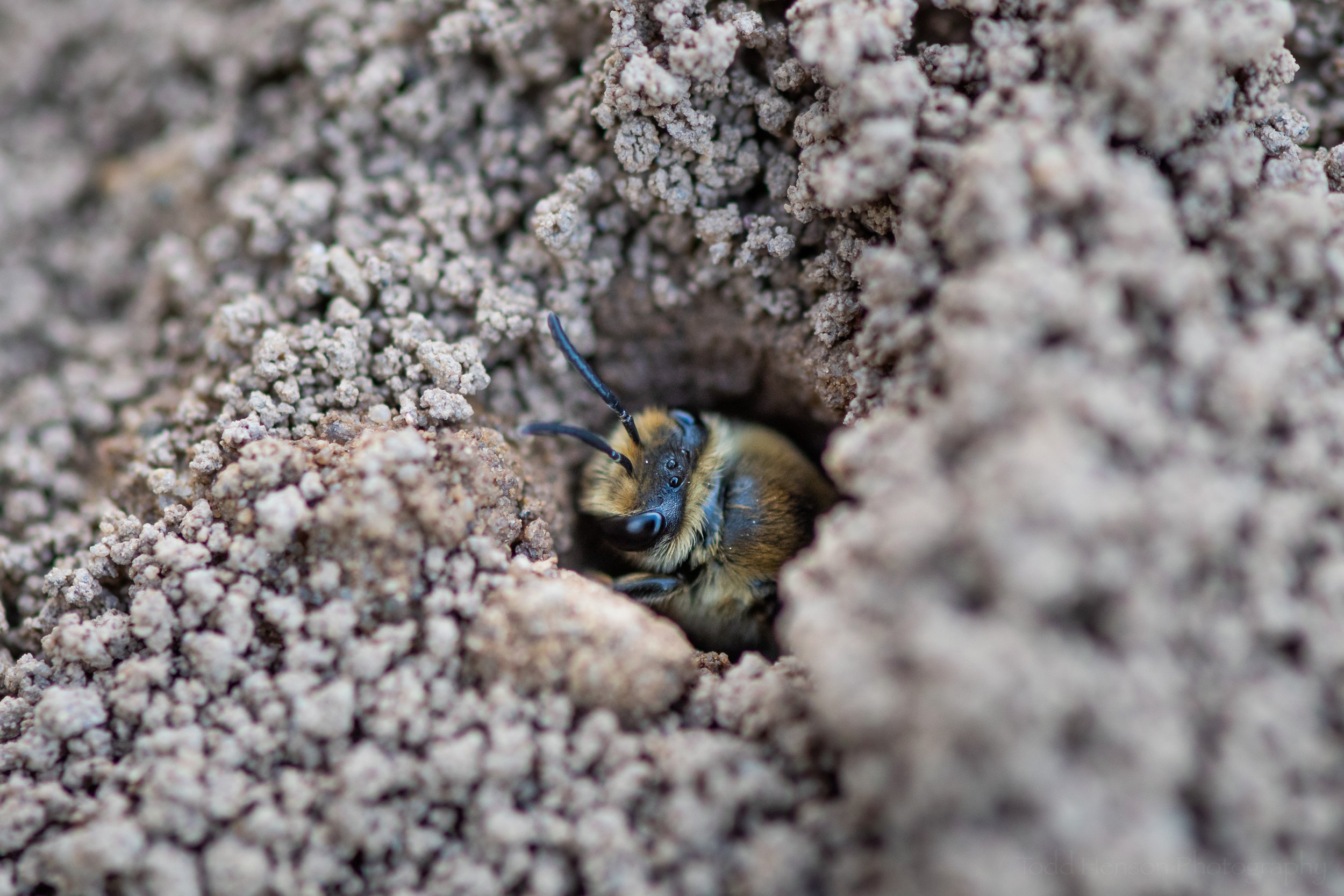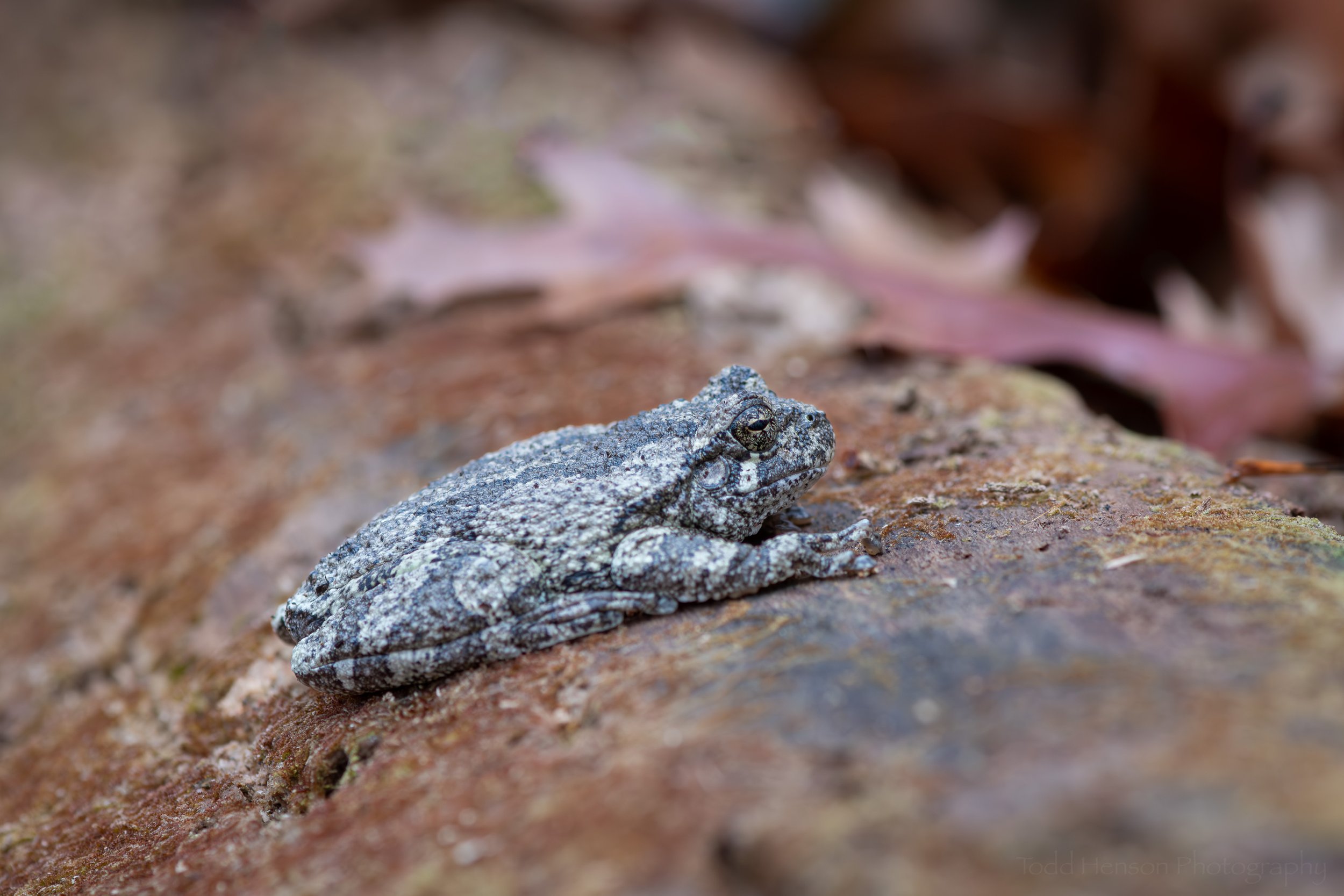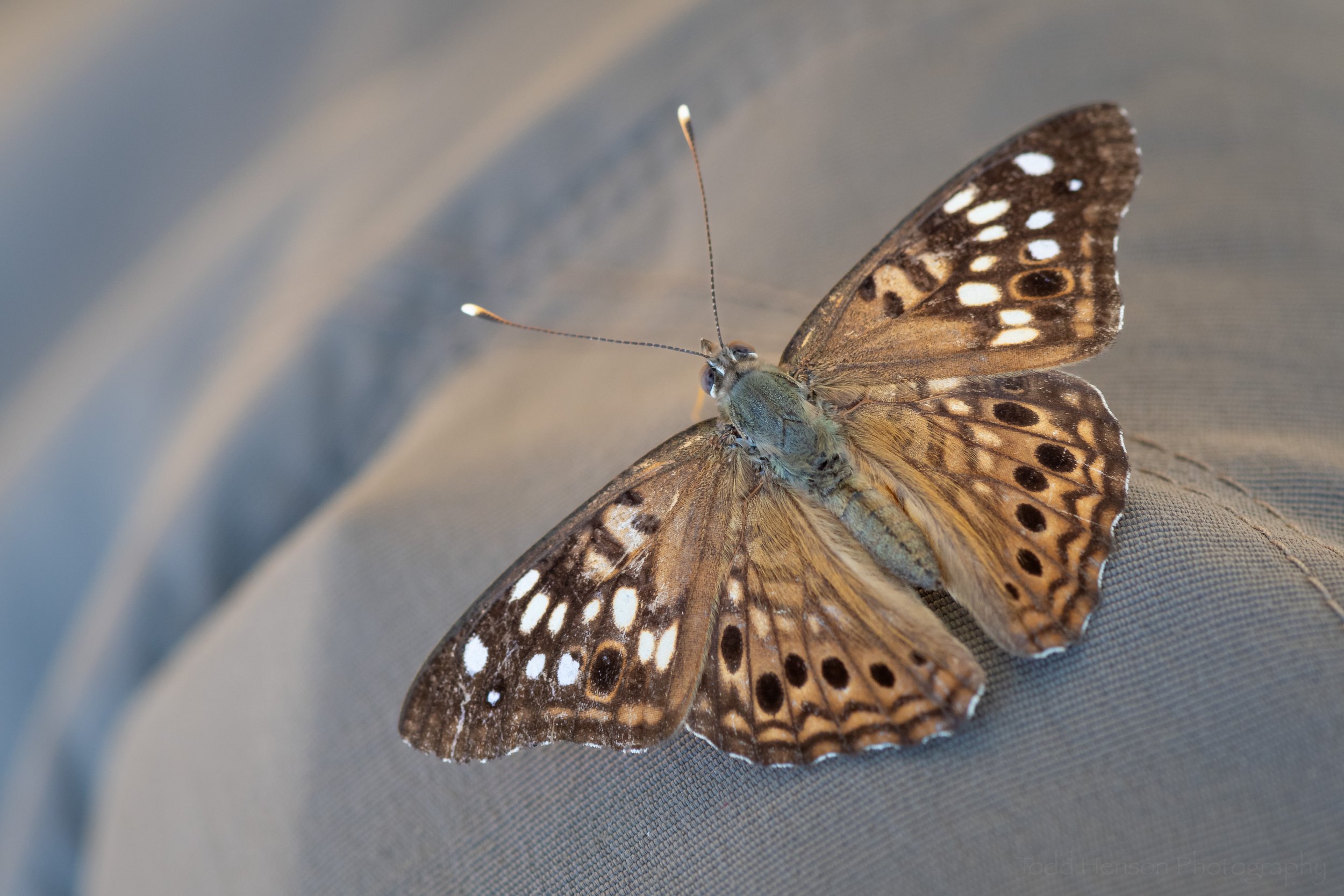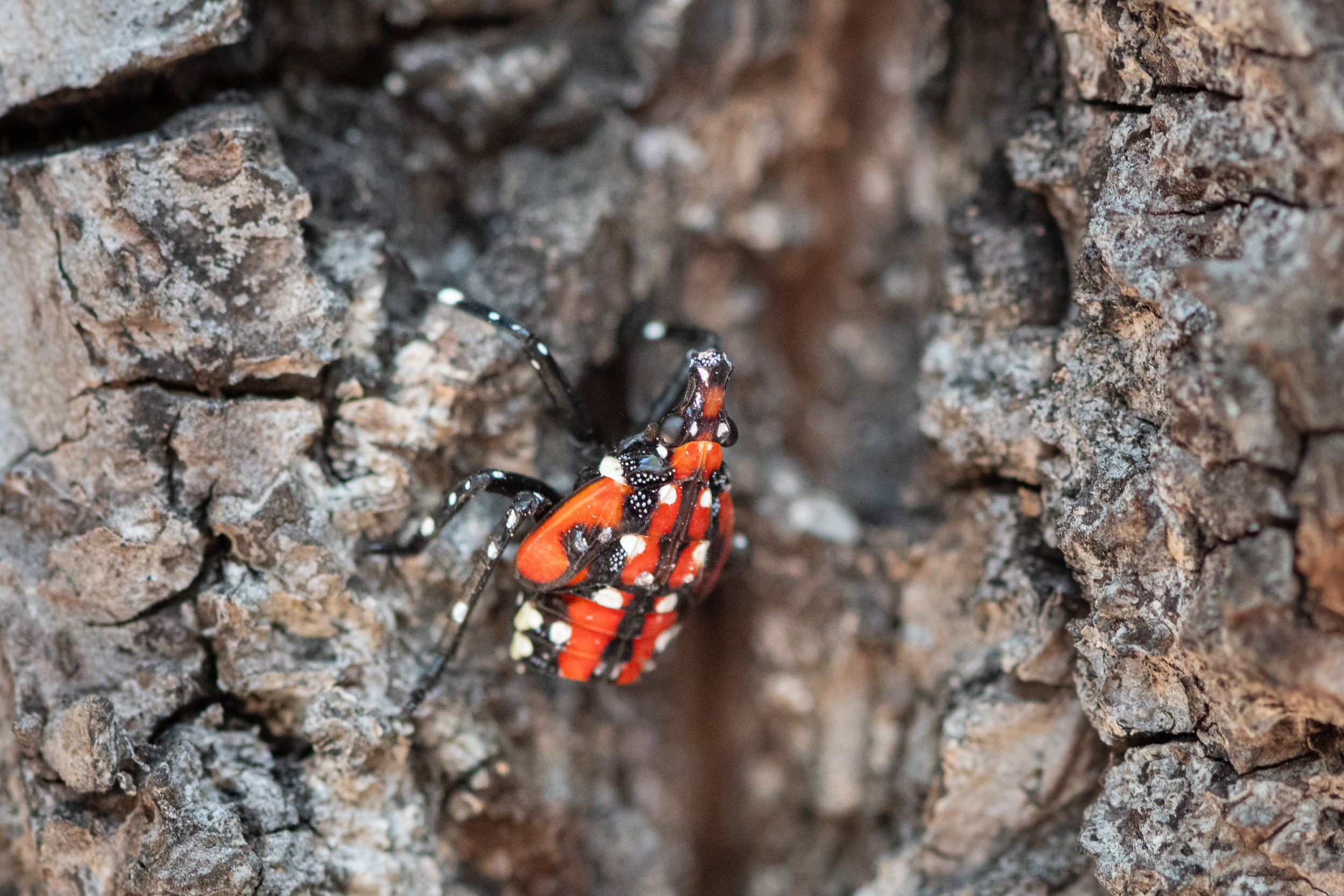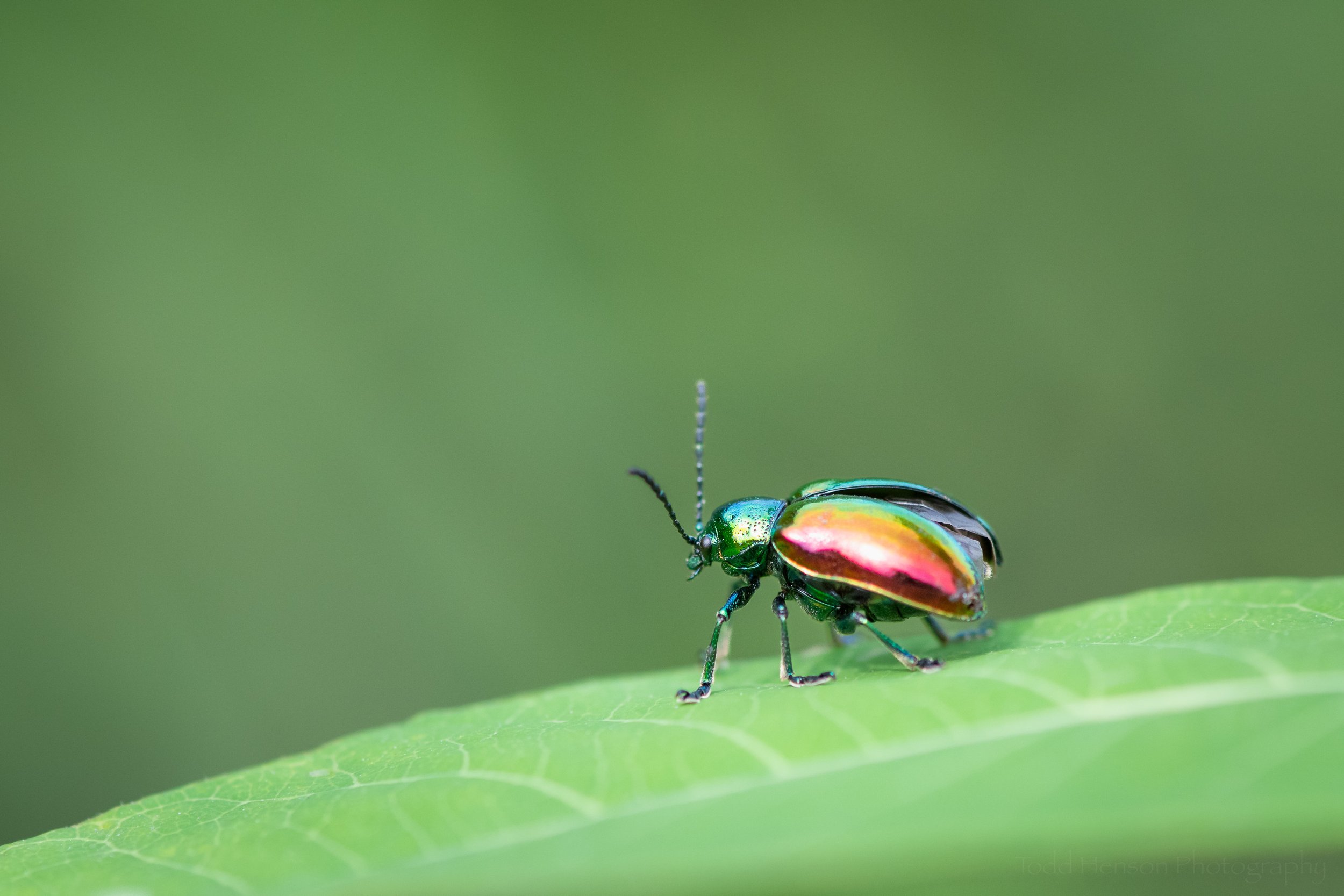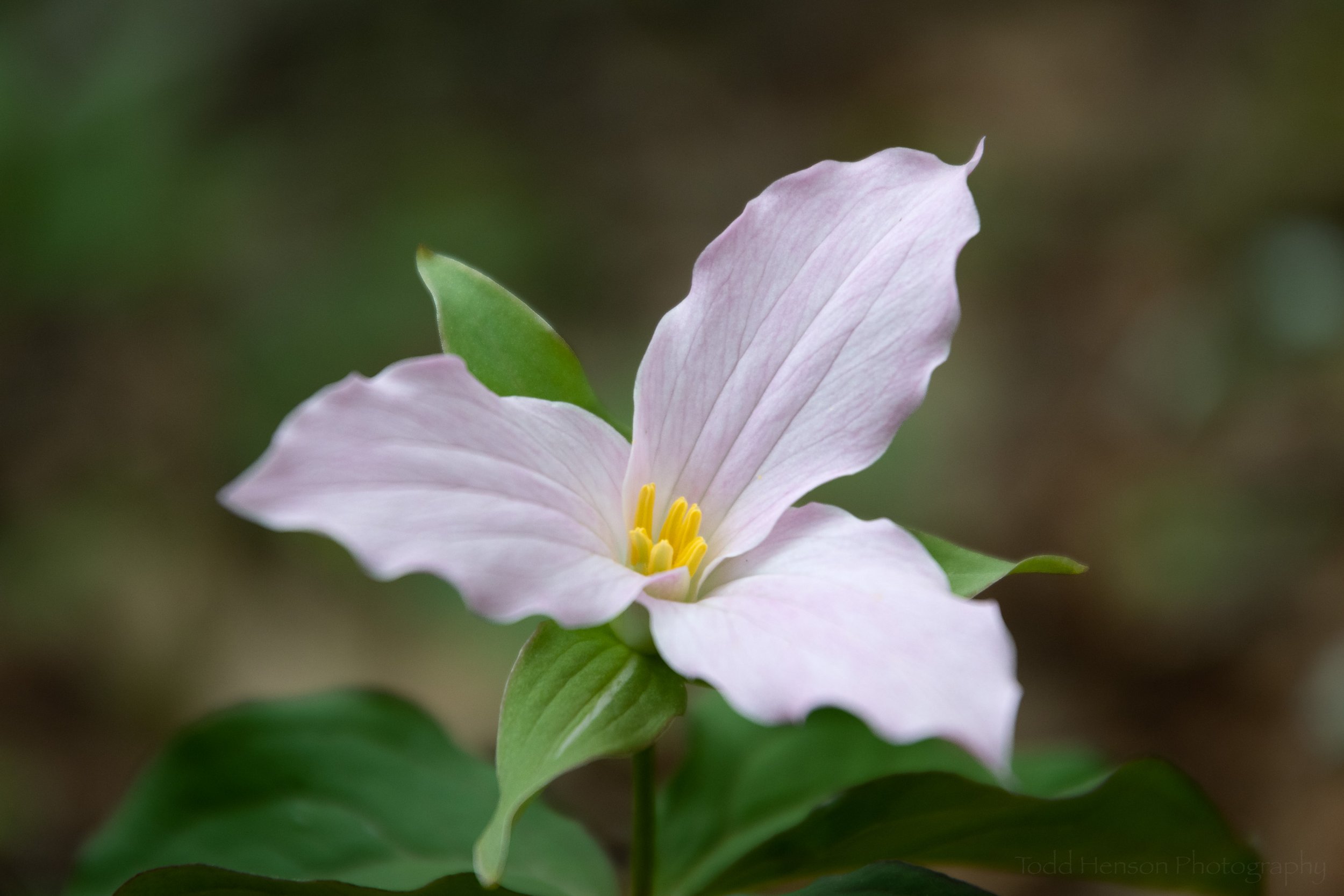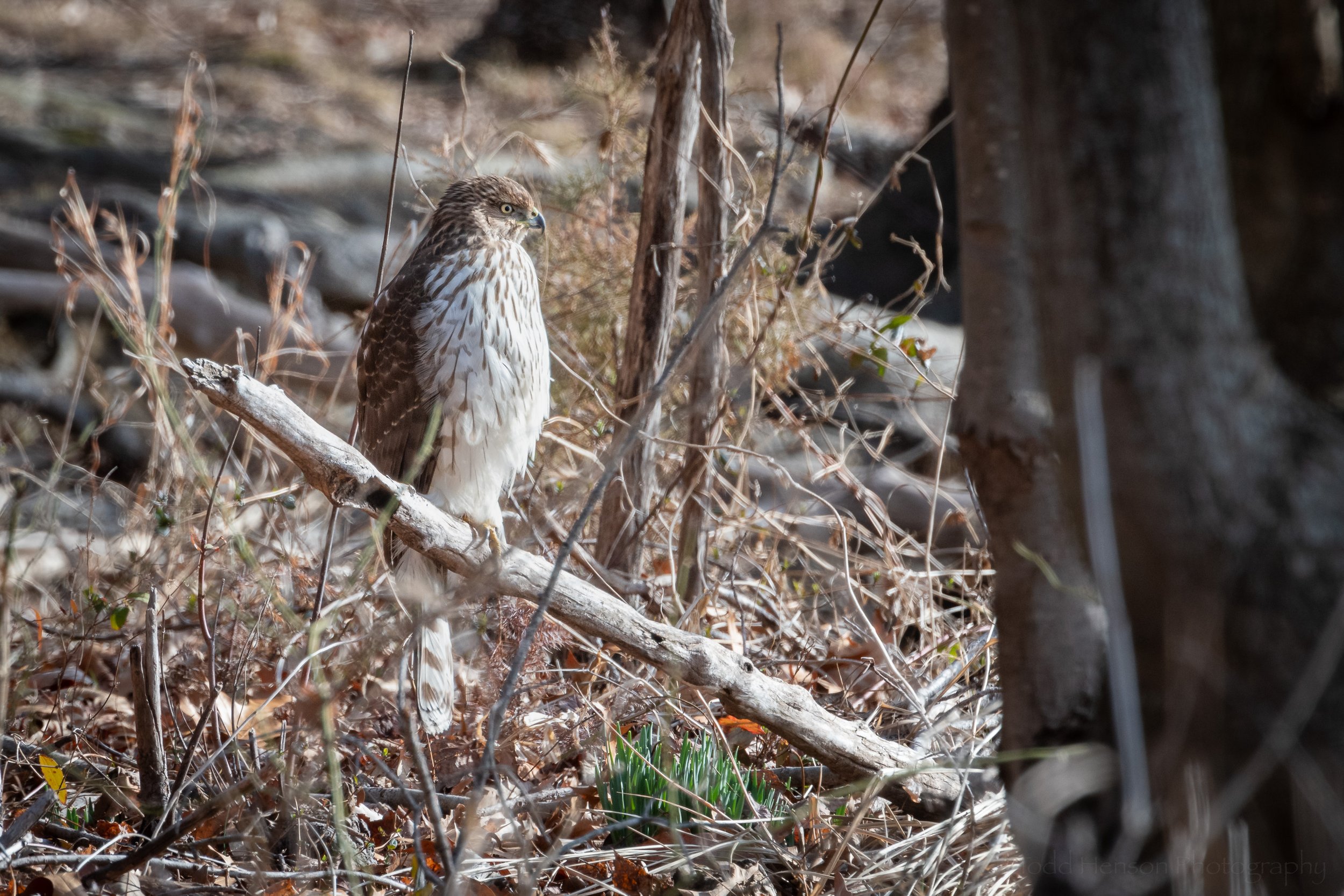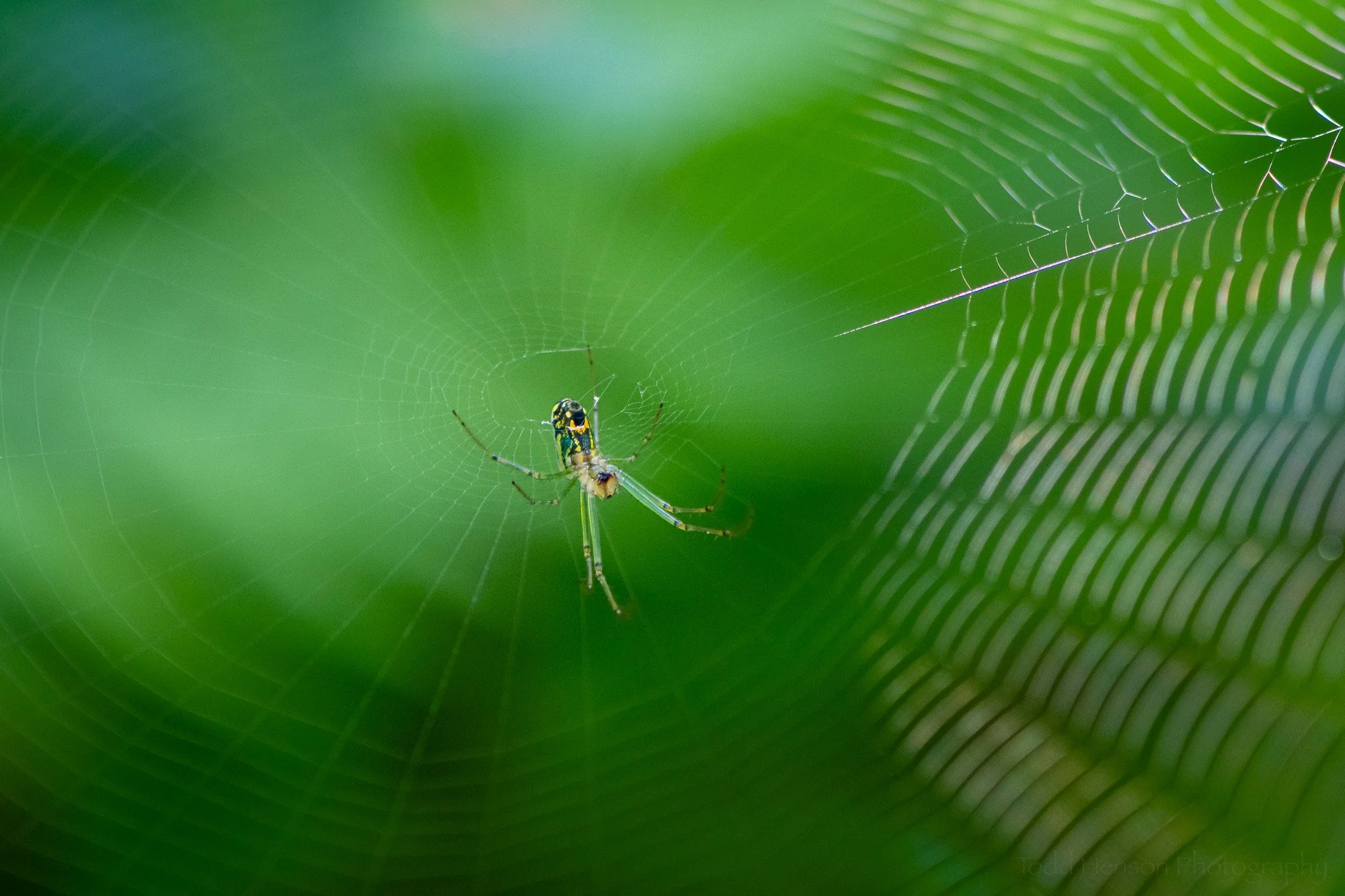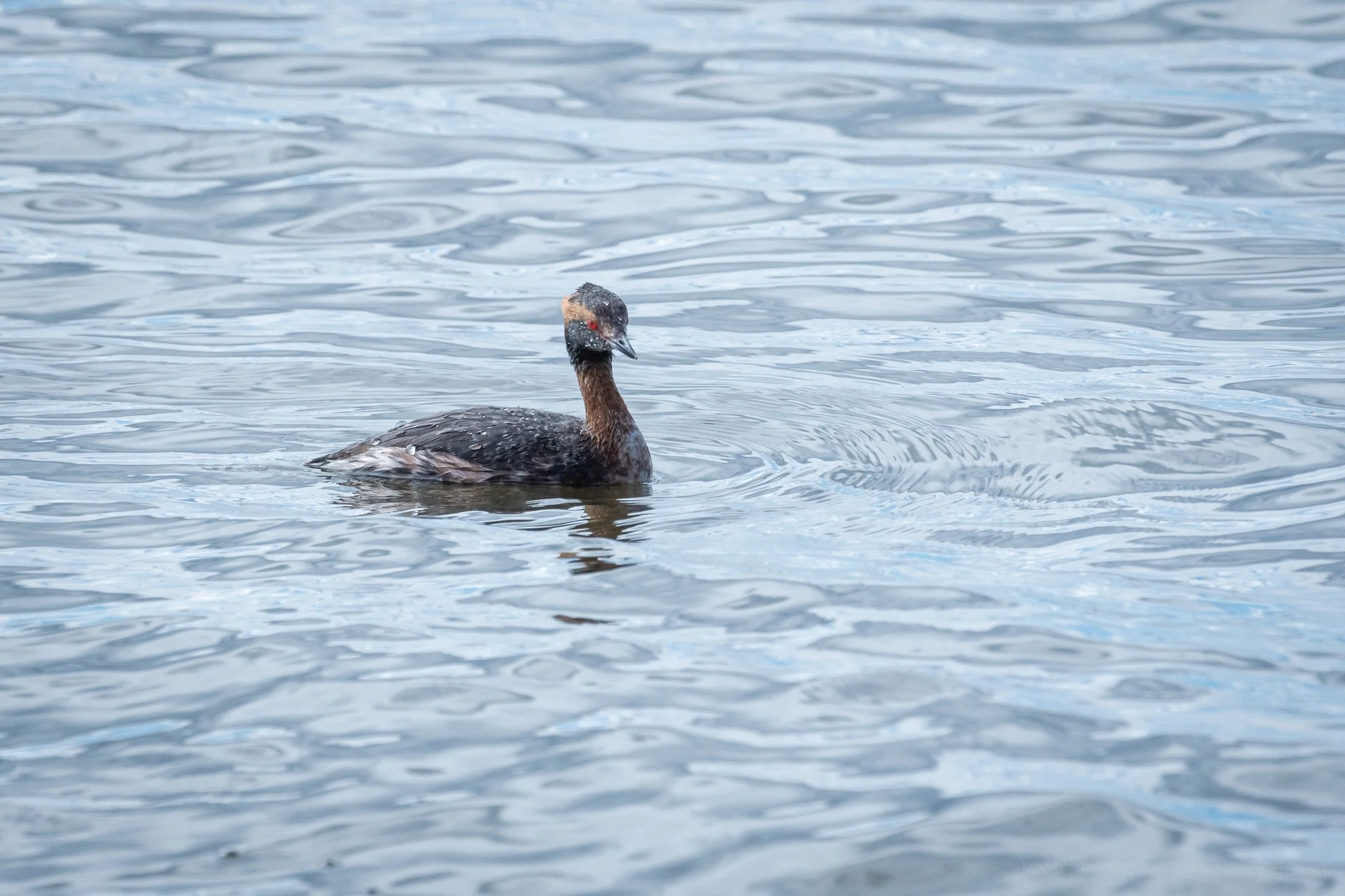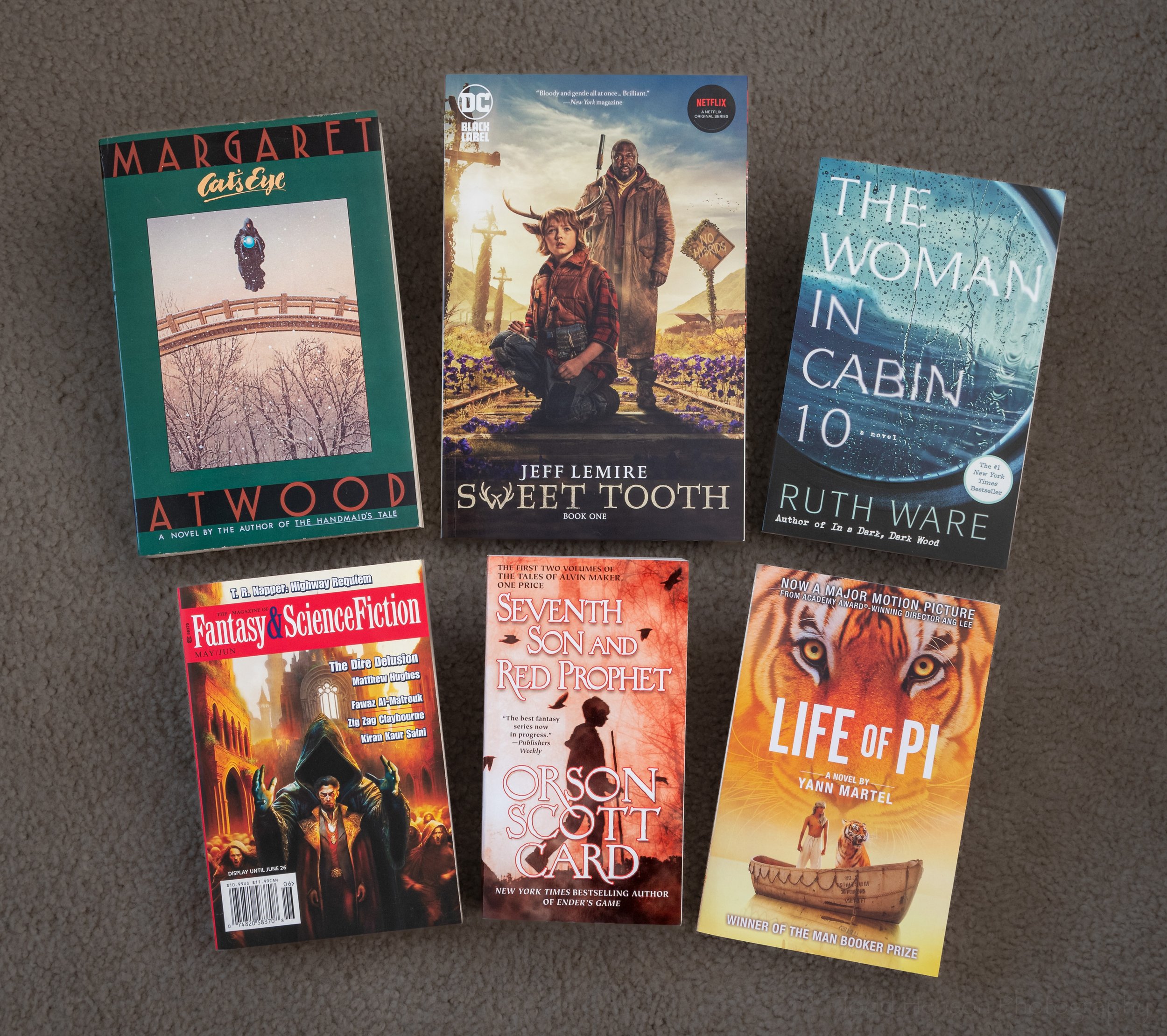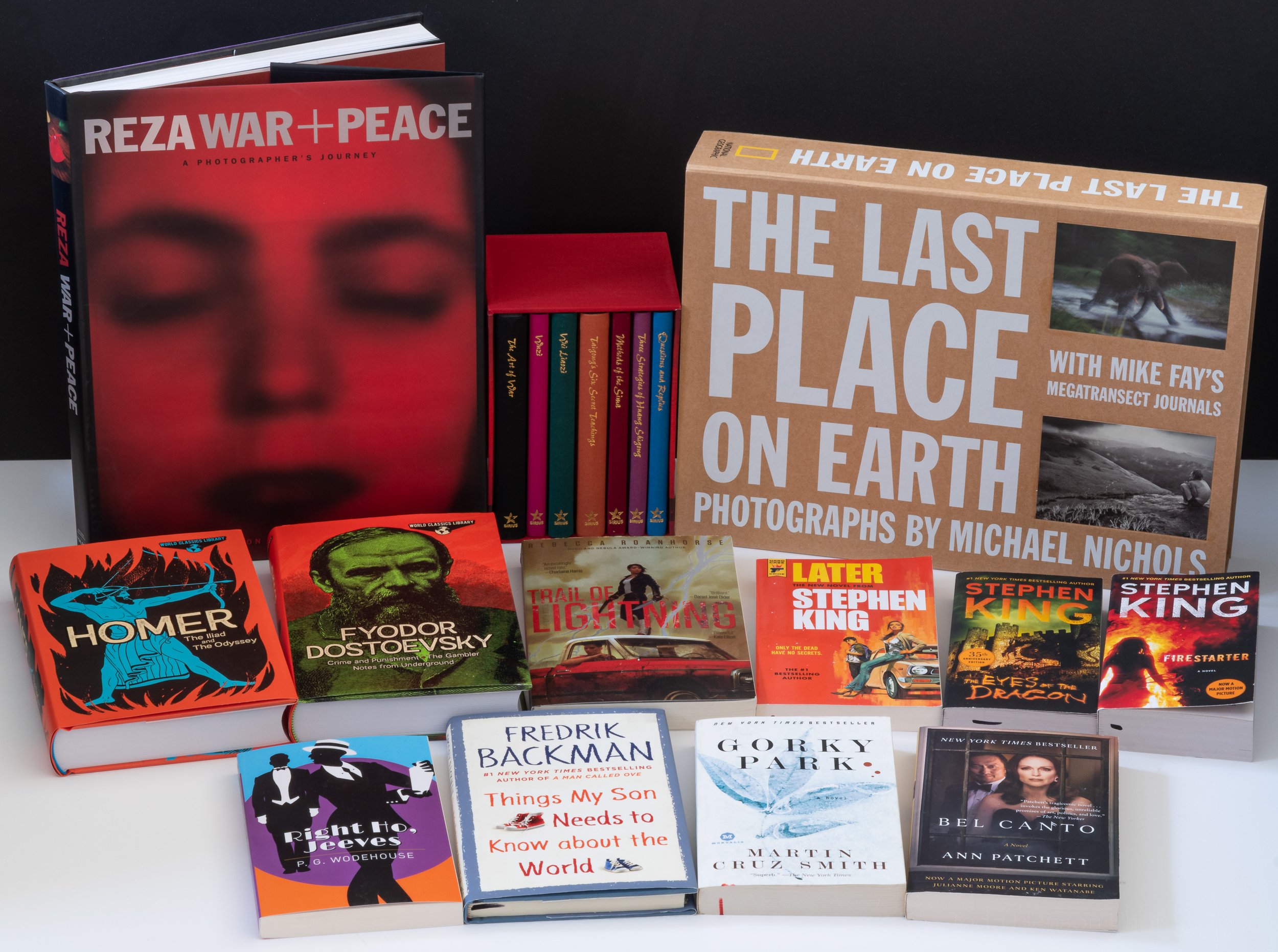Underside of an Arrow-shaped Micrathena spider. Click on the photo for a larger view.
Arrow-shaped Micrathena (Micrathena sagittata) are a species of orb-weaving spider with an interesting arrow-shaped body and beautiful coloration including a mix of yellow, black and red. They have what appear to be 2 large spikes sticking out the end of their abdomen, with 4 smaller spikes around the middle and front of the abdomen. You can only see 4 of these spikes on the spider pictured here. Apparently in males of the species these spikes are smaller or sometimes missing completely, so I’m guessing this one is a female. The large protrusion in the center of the underside of its abdomen contain its spinnerets, used to extrude the silk that makes up its web.
I found this particular specimen along a trail in a forested park. It was hanging on its web with its underside facing the trail. It can be easy to overlook spiders while hiking, except of course when they build their webs right across the trail. But this one was at the edge of the trail, with a very nice patch of green foliage in the background that turned into a beautiful green blur in the image.
Photographing the Micrathena
The content below contains affiliate links and I will be compensated if you make a purchase after clicking on my links. This is at no extra cost to you.
To photograph this Micrathena I used a 105 mm macro lens (Nikon AF-S VR Micro-Nikkor 105mm f/2.8G IF-ED). I set the ISO to 1000 because I was photographing in a forest with little sunlight getting through all the leaves. I used an aperture of f/9 to give me a reasonable depth of field with the macro lens. But as you can see, portions of the spider are still out of focus. The shutter speed was 1/25th of a second, which is rather slow but was enough in this case. I used a tripod to keep the camera steady.
Keep your eyes open as you hike through the woods, both to avoid walking right into a spider web across the trail, but also to give you the opportunity to see some of the amazing spiders living just off the trail.
Do you enjoy these posts?
Sign up to receive periodic emails with updates and thoughts. Don’t worry, I won’t spam you. And please consider purchasing artwork or products from my online store, and using my affiliate links in the sidebar to the right when shopping online.
I appreciate your support!
